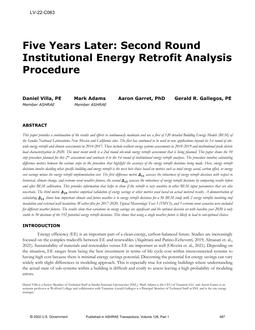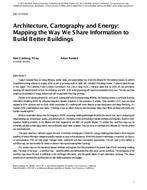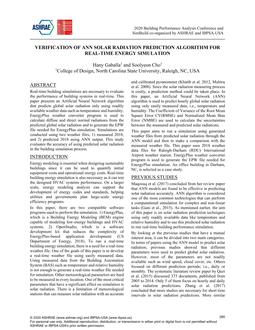Click here to purchase
The use of the BuildingSync schema for describing thecontents of buildings is becoming more common with itsrecent integration into the Audit Template tool as well asASHRAE’s Building Energy Quotient (bEQ) web portal.Although BuildingSync was initially created to store andtransfer data related to building energy audits (as definedby ASHRAE Standard 211), it has since been expandedto store the data needed to articulate fully definedphysics-based building energy models. BuildingSynccombined with abstracted high-level input methodsdefined in OpenStudio’s Standards project and the newlydeveloped BuildingSync gem allows BuildingSynceXtensible Markup Language (XML) (Bray, Paoli,Sperberg-McQueen, Maler, Eve (Sun Microsystems, &Francois, 2008) document to be converted intoOpenStudio models. Automatic generation of a buildingenergy model from data collected during an audit 1)eliminates the need to separately generate an energymodel, 2) improves consistency between modelgeneration, and 3) simplifies evaluation of variousenergy efficiency measures.This manuscript will discuss this open-source project,including: development of the validation infrastructurenecessary to provide formalized expectations ofinformational requirements for BuildingSyncdocuments; development of the BuildingSync gem fortranslation of BuildingSync documents to OpenStudiomodels as well as example implementations; and finally,the manuscript will elaborate on the advantages anddisadvantages of using high-level models generatedfrom BuildingSync as surrogates to detailed models.
Citation: ASHRAE/IBPSA-USA Bldg Simulation Conf, Sept 2020
Product Details
- Published:
- 2020
- Number of Pages:
- 10
- Units of Measure:
- Dual
- File Size:
- 1 file , 830 KB
- Product Code(s):
- D-BSC20-C033


